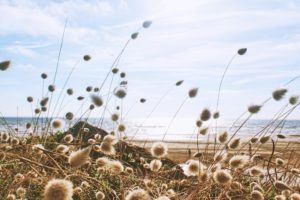What is ovulation?
Ovulation (the Ovulatory phase) is the shortest phase and lasts for 2-3 days.
Ovulation is when a mature egg is released from the ovary, pushed down the fallopian tube, and is made available to be fertilized.
Approximately every month an egg will mature within one of your ovaries. As it reaches maturity, the egg is released by the ovary where it enters the fallopian tube to make its way towards waiting for sperm and the uterus.
The lining of the uterus has thickened to prepare for the fertilized egg. If no conception occurs, the uterine lining, as well as blood, will be shed.
The shedding of an unfertilized egg and the uterine wall is the time of menstruation.
The interlude – ovulation
The dominant follicle in the ovary produces more and more estrogen as it grows larger.
The dominant follicle reaches about 2 cm (0.8 in)—but can be up to 3 cm—at its largest right before ovulation (6,7). When estrogen levels are high enough, they signal to the brain causing a dramatic increase in luteinizing hormone (LH).
This spike is what causes ovulation (release of the egg from the ovary) to occur. Ovulation usually happens about 13-15 days before the start of the next period.
During this time, if the egg comes in contact with sperm, it is fertilized. So keep in mind that during these days you are most likely to get pregnant (remember to use contraception).
The egg will survive for 12-24 hours and will either be fertilized or will die. Your cervix becomes soft, moves up higher and opens. It moves up higher to help the egg get the best sperm – the sperm have to swim farther to get to the egg. Your cervical fluid is very clear or viscous egg-white fluid, with lots of elasticity.
Hormones during ovulation
The two main hormones from the previous phase, estrogen and testosterone, continue to ride to their peak levels, enhancing all the benefits you enjoyed during the follicular phase.
You may notice you look, and feel, more attractive, and more confident. Your senses may feel heightened, your vision, smell and taste. You also may notice an increase in libido, or sexual arousal, again – mother nature doing its part to ensure procreation.
What to do when you are ovulating
This is a great time to connect with your sexual energy and put it towards connecting with your own body and energy, or with your partner. Ovulation phase is the optimal time to be putting energy outward, to connect with new friends and relationships, to make future plans, and plan public speaking or networking events.
This is also the best time in your cycle for high impact and intensity workouts.
Book your consults by calling 1 778 400 6360 or if you are not local, we can connect virtually by booking your 15 minute here.



